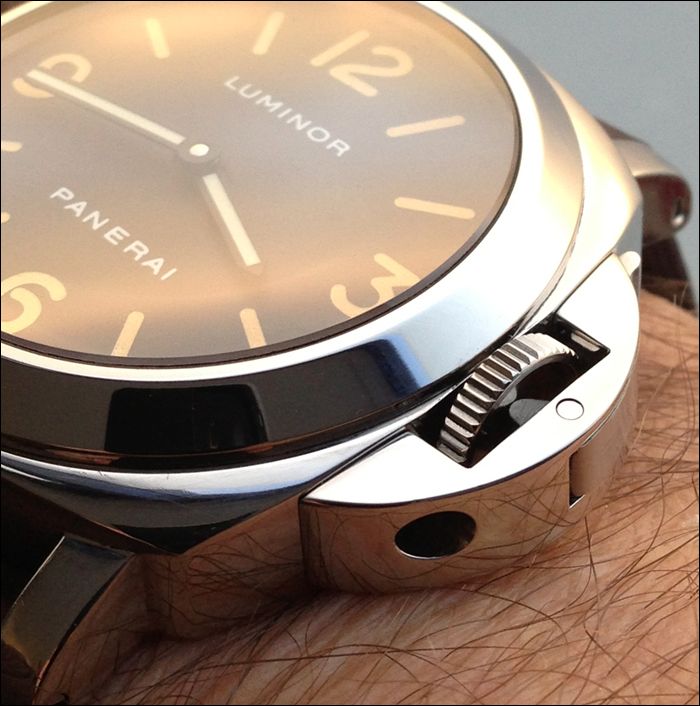I am not sure what has been said on RG so I cannot comment...
and without getting into it I will say a few things about PAMs from this era...and I must admit is one reason I love PAMs so much..
If you say you know all PAM dials from the Cartier and Vendome era then you really dont understand PAMs or thier history.... it si that simple and that is why PAMs are such a great brand to get into...
Just when you think you understand a detail you find a complete contradiction....
If you take TST dials generally ... on any model.... you have to factor in so many variables that you can never be certain of any conclusion...
For example... the first Cartier models produced were the 209 and 210...these had the new Cartier case and CG but the 209 for example used the 5218-201a dial... but what Cartier did was remove the PREV serif and use a new font.... so what you see if basically a PreV dial in a PreA case set.... moving on from that there has been PreV dials found in PreA cases ... but again the difference is the serif...
OP was at the time of its takeover in disarray.... it had been mismanaged and Cartier needed to egt a new range of models coming out to ensure a revenue and return...as they started to take over work shops and offices they kept finding spares of all sorts from OP..so rather than throw them away they used them and/or adapted them
Dials was the most common part to be adapted and this was mainly the PreV dials having serif removed and replaced with new font then lumed and put in all sorts of models... then as they ran out they started making their own dials with new coinage.... in addition many staff were laid off and new staff and locations used to produce these watches and more importantly the dials....
At that time all dials were hand lumed in batches... it might be 30 one day and the following week another 100...there was no rule
The lume was applied using a stylogarph by a lumer.... these were filled with a hand mixed lume... so from that you need to factor in variations not only in the lume mix but also in its application...
A sausage lume is applied in a stamped dial so the markers and numbers are indented or coined... the lumer applies the lume and depending on the mix the way the lume sits in the dial markers can vary... it can stand proud, it can sink it can do any number of things depending on its mix and thickness etc... Lume is mixed with lume powders and varnish... its like mixing a paint if you like....
You then mix it the work ethic of many OP staff at the time and the uninterest some showed due to staffing issues etc or how when it moved from PreA ie 6500/6502 cases to later A series there was a lot of changes going on this effected what you might recieve from a new ordered PAM...
Its a bit like when you look at fat and thin PreV dials..... some people think this was because the dials were different... that aint the case... it was because of the lume..the dials had the same coinage... but some lumers kept the lume in the indented markers and some let it spread to the edges... this gives the effect of a dial marker looking fat or thin or a detail on say a 3 may vary because of this same reason... the way its lumed can make the lume look a completely different shape... especially on tails and where a lume line changes direction... it can look sharp or it can look rough and blurred...
You can bring out all sorts of examples even going to G & H transitional ... but it is most noatble on PreV..PreA Transitional and PreA to A Transitional and on into A to B transitional
The variables go on and on in this era... wrong case back, wrong hands, wrong lume blah blah...
There are no rules as such just guidelines... I have seen true Risti experts categorically state a particular detail and further down the line someone has appeared with a contradiction to that detail that can clearly be proven..
I also have many many references pics of TST dials unmounted and all of them vary in some way or another if you really get down to the micro details....
I am not saying anyone is right or anyone is wrong ...what I am saying is that not one point of view can be, within reason, absolutely correct...
That is the beauty of PAMs especially at the time in its history or indeed going up to the G series when changes really were made..however even now there are still ambiguities not as many nor as far reaching but enough to keep an interest...
Then add things as have been mentioned like lighting, cameras, lens etc etc and you really are stirring the pot of intrigue



